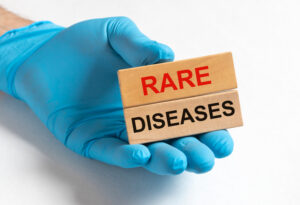Blue man syndrome
Blue man syndrome (argyria or argyrosis) is a rare skin condition induced by prolonged exposure to silver chemical compounds or dust. The most noticeable sign of argyria is the blue or blue-grey coloration of the skin. This color change is permanent.
It can manifest as either generalized argyria or localized argyria. Generalized argyria affects a significant portion of the body’s visible surface. Local argyria manifests as in isolated areas of the body, such as patches of skin, mucous membranes, or the conjunctiva.
Causes
- Occupational exposure – mostly in personnel involved in silver mining, refining, silverware and metal alloy manufacture, electroplating solutions for glass and china, and photographic processing.
- Prolonged use of silver salts for irrigation of the urethral or nasal mucous membranes, in eyedrops, or wound dressing or excessive use of an oral smoking cure containing silver acetate.
- Colloidal silver dietary supplements are frequently advertised as a therapy for rheumatoid arthritis, diabetes, cancer, herpes, and AIDS.
- Silver sutures are utilized in abdominal surgery and silver dental fillings are used in dental operations (amalgam tattoos).
Drugs – If you take a drug containing silver for an extended period of time, it may create argyria. Fortunately, such medications are not as widely utilized as they formerly were. The following usage of silver has been demonstrated to produce argyria:
Silver nitrate is a topical solution that is used to treat gum bleeding and varicose veins.
Silver sulfadiazine cream is used for wounds and burns to prevent infection.
Silver acetate is a substance used in lozenges and other items designed to aid in smoking cessation.
Colloidal silver protein is a kind of protein that is utilized in eyedrops.
Symptoms
- If you have argyria, the symptoms may begin in your mouth, with gray-brown gums. Your skin may begin to seem slate-gray, metallic, or blue-gray in appearance. This may occur after a few months or years, depending on the amount of silver exposure. It may impact simply a small region of the skin or it may alter the look of your entire body.
- The discolouration may be particularly noticeable on your forehead, nose, hands, and other sun-exposed regions.
- Additionally, the whites of your eyes and nail beds may become blue-gray.
- Internal organs in certain people’s abdomens, such as the spleen, liver, and intestines, take on a bluish tint, although this is not seen unless they have surgery.
Diagnosis
- A physician may get blood, urine, and stool samples from a patient suspected of having argyria. These will assist them in determining whether a person has been exposed to silver during the recent week.
- Additionally, the doctor may do a skin biopsy to confirm the diagnosis of argyria. This process entails the excision of a tiny sample of skin for microscopic examination. Brown-black in appearance Within the sample, granules indicate the presence of silver.
- Additionally, the doctor will need to rule out other possible causes of blue-gray skin pigmentation. These include the following:
- Ochronosis induced exogenously – Discoloration of the skin typically occurs as a result of chronic usage of skin-lightening treatments such as hydroquinone.
- Chrysiasis – Discoloration of the skin as a result of long-term usage of gold salts for the treatment of rheumatoid arthritis.
- Hemochromatosis is sometimes known as “iron excess.” A condition in which the body absorbs an abnormally high amount of iron. Without treatment, it can be lethal.
Treatment
- Argyria has no known remedy at the present, and the illness appears to be incurable. Attempts to reverse the discolouration with depigmenting chemicals have been unsuccessful.
- Additional treatment possibilities include the use of hydroquinone to reduce the amount of silver particles in the top layer of skin and sweat glands, as well as rigorous cleansing routines aimed at removing silver and other environmental contaminants.
- Some have reported success with laser surgery in reversing the discolouration. Another therapy option is to supplement with selenium and vitamins A, C, and E in order to reduce the size of any silver particles embedded in the skin and so prevent them from absorbing light.



